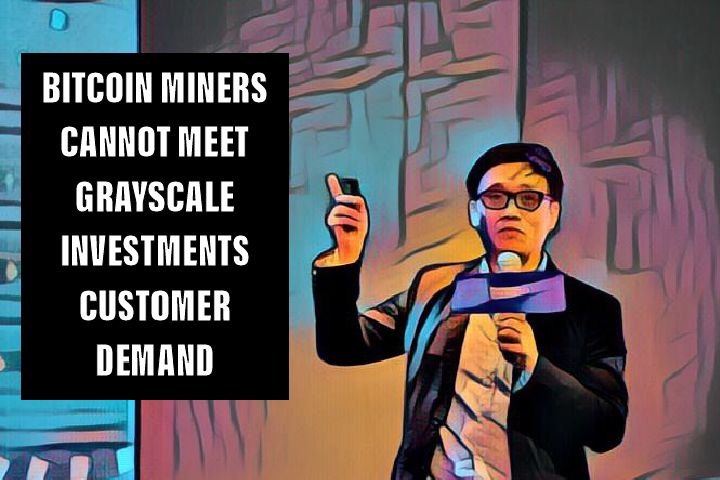Considered the world’s most actively used blockchain network, Ethereum (CRYPTO: ETH) has successfully transitioned from a mining and energy-intensive proof-of-work (PoW) consensus mechanism to a proof-of-stake (PoS) model that replaces miners with validators.
Dubbed as The Merge, this move has been touted to help improve Ethereum’s scalability, reduce its energy requirements and make its entire ecosystem more secure.
However, the elimination of the need to mine Ethereum will undoubtedly impact the overall global graphic processing unit (GPU) demand, casting doubt over the future growth potential of chipmakers like NVIDIA Corporation (NASDAQ: NASDAQ:NVDA), Advanced Micro Devices Inc. (NASDAQ: NASDAQ:AMD) and others.
Delving into Nvidia’s quarterly results to understand the revenue share of GPUs in its overall business does paint a less extreme picture than what is being surmised.
ETH upgrade to impact NVIDIA revenue:
Lian Offering a viewpoint on how Ethereum’s transition will impact NVIDIA and other chipmakers, thought leader and best-selling author Anndy Lian says, “The Merge will completely remove the need for miners, who are currently securing the Ethereum network. They will replace them with validators. This upgrade would lead to a big revenue miss for NVIDIA, whose stock was down by nearly 20% compared to the previous quarter, associated to a slowdown in the gaming business and weakness in the global markets.”
The impact of the change to POS would be reduced if the forked POW chains can keep their demand high, getting support from big miners and backed by strong communities who believe that POW is the core value.
“If this is executed properly with the support of companies like NVIDIA, this market push is likely to put these listed chipmakers in a much better position,” Lian adds.
The world leader in the discrete graphics card business, NVIDIA’s graphics business contributes to 58% of the company’s revenues and 62% of its operating income, according to Investopedia.
This includes the GeForce GPUs, GeForce NOW game-streaming service and solutions for gaming platforms provided by NVIDIA.
GPU market to post healthy growth
Despite the fact that sales for the GeForce GPU will be affected by the drop in GPU demand on account of Ethereum’s design change, analysts expect the overall GPU market to post healthy growth rates over the next five years due to strong demand from the gaming industry.
What is worrisome, however, will be the loss of pricing power that companies like NVIDIA enjoyed as long as the semiconductor chip shortage lasted.
With demand pressures and pricing challenges increasing, chipmakers like NVIDIA will need to aggressively focus on other verticals to maintain profit margins.
Echoing this sentiment, Raj Kapoor, Founder and CEO of India Blockchain Alliance says that Ethereum is not the only coin that mines decently on a graphics card and that Beam and Ravencoin are actually similarly profitable at this time, and even when ETH mining stops, those would still continue.
According to experts, post The Merge, crypto miners will be looking elsewhere for mining opportunities as long as there are other coins that will reward them for their effort.
“It is also possible that combined with the great crypto value crash of 2022, some miners decide to get out of the business altogether. Some may even try and make their own forked version of Ethereum, one that requires mining and no rules. We would probably see increased availability of second-hand GPUs that have been mined to bits as a result of the second-largest crypto moving away from mining,” Kapoor says.
He adds that with ETH’s move to PoS being in the cards for a long time, most miners will have planned ahead with alternative money-making endeavors.
Once the flooding of GPUs in the used market stops, GPU demand would revert back to previous levels, unless there is some other factor that reduces the overall demand.
With the increased usage of computers for entertainment and work purposes being a trend that will stay, eventually, all forces will balance out again.
As for companies like NVIDIA that are involved in the manufacturing and distribution of GPUs, they’re already bundling them with other products and exploring other business verticals to supplement their profits, he further says.
While the short-term effect of Ethereum’s shift to a PoS model will dent sales for NVIDIA and other chipmakers, the overall growth story for GPUs and allied services seems intact.
Moreover, as these companies expand their range of products and services into areas such as Artificial Intelligence (AI), their reliance on the crypto world will eventually fade away and will be replaced by Web3-focused consumer products in the near future.


Anndy Lian is an early blockchain adopter and experienced serial entrepreneur who is known for his work in the government sector. He is a best selling book author- “NFT: From Zero to Hero” and “Blockchain Revolution 2030”.
Currently, he is appointed as the Chief Digital Advisor at Mongolia Productivity Organization, championing national digitization. Prior to his current appointments, he was the Chairman of BigONE Exchange, a global top 30 ranked crypto spot exchange and was also the Advisory Board Member for Hyundai DAC, the blockchain arm of South Korea’s largest car manufacturer Hyundai Motor Group. Lian played a pivotal role as the Blockchain Advisor for Asian Productivity Organisation (APO), an intergovernmental organization committed to improving productivity in the Asia-Pacific region.
An avid supporter of incubating start-ups, Anndy has also been a private investor for the past eight years. With a growth investment mindset, Anndy strategically demonstrates this in the companies he chooses to be involved with. He believes that what he is doing through blockchain technology currently will revolutionise and redefine traditional businesses. He also believes that the blockchain industry has to be “redecentralised”.




